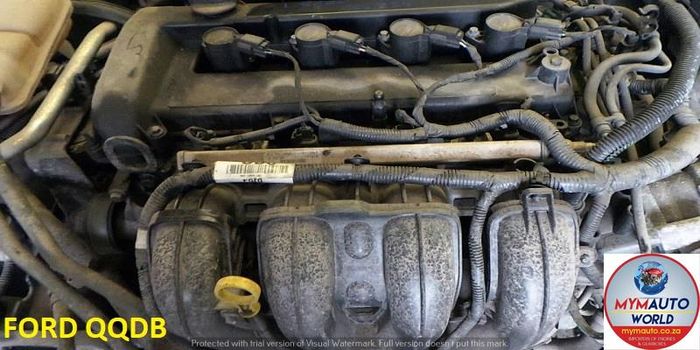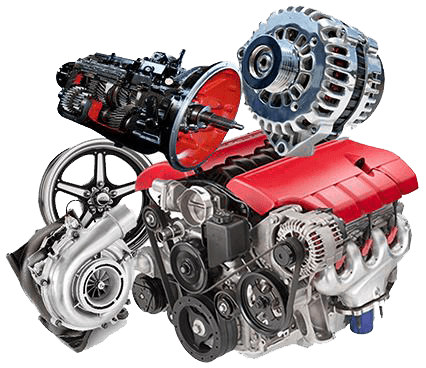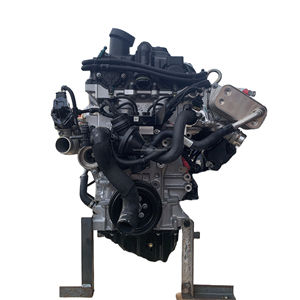Inexpensive Opel Corsa Engine Options for Your Budget plan
Inexpensive Opel Corsa Engine Options for Your Budget plan
Blog Article
Exploring the Inner Workings of a Compact Lorry's Engine System
As vehicle drivers, we commonly take for approved the elaborate processes that happen within the boundaries of our car's engine system. The compact yet complex equipment that propels us onward is a marvel of design precision and coordination. From the controlled explosions in the burning chamber to the meticulous timing of gas injection, every part plays a vital role in the smooth procedure of the engine. In this expedition of a compact lorry's engine system, we will untangle the inner operations of this mechanical symphony, clarifying the secrets that drive us forward on our day-to-day journeys.
Combustion Refine Overview
The combustion procedure in a compact automobile's engine system is a crucial system that successfully converts fuel right into power to power the vehicle. This procedure takes place within the combustion chamber of the engine, where fuel and air mix, spark, and generate controlled explosions. The combustion procedure consists of four primary stages: consumption, compression, power, and exhaust.
Throughout the intake stage, the piston relocates downward, attracting in a mix of air and gas right into the combustion chamber. This descending movement generates the power needed to drive the automobile. This cyclic burning procedure is fundamental to the operation of a small automobile's engine system, making certain reliable energy conversion for propulsion.
Piston and Cylinder Interaction

The piston's accurate fit within the cyndrical tube is necessary for keeping optimal compression and avoiding energy loss during combustion. Tight clearances between the piston and cylinder wall surfaces guarantee effective sealing, enabling the piston to move smoothly without allowing gases to leakage past. Correct lubrication is additionally vital to reduce friction and put on in between these parts, improving durability and performance.
Additionally, the layout and products used in manufacturing the piston and cylinder influence engine performance and durability. Modern engines often utilize light-weight yet resilient materials like light weight aluminum alloys for pistons and cyndrical tube liners to reduce inertia and boost thermal performance. Generally, the harmonious interaction in between the piston and cyndrical tube is fundamental to the engine's functionality and total performance.
Fuel Shot System Performance
Fuel shot systems in small car engines play a vital role in specifically providing gas to the burning chamber for regulated and efficient ignition. The gas injection system operates by injecting gas into the burning chamber at the ideal moment throughout the engine's operation (opel corsa engine). This specific timing makes sure that the fuel blends uniformly with the air for appropriate combustion, bring about boosted fuel performance and lowered exhausts
There are largely two sorts of fuel shot systems utilized in portable car engines: port gas injection (PFI) and direct gas injection (DFI) PFI systems infuse gas into the consumption port prior to the intake valve, while DFI systems infuse fuel straight into the burning chamber. Both systems have their benefits, with DFI providing far better fuel atomization and PFI offering an extra cost-effective option.
Understanding Engine Cooling Systems
Reliable operation of a small lorry's engine relies heavily on the efficiency of its cooling mechanisms. Engine cooling is necessary to avoid getting too hot, which can bring about serious damage and reduced performance. The air conditioning system in a portable vehicle usually is composed of numerous components interacting to control the engine temperature. One crucial part is the radiator, which utilizes coolant to soak up heat from the engine. As the hot coolant flows through the radiator, it releases heat right into the air, cooling off prior to going back to the engine. The water pump flows the coolant via the engine and radiator, guaranteeing a constant flow to regulate temperature. Additionally, the thermostat assists manage the coolant circulation to keep optimum engine temperature level. Some cars likewise have cooling fans that activate when extra air conditioning is required, such as throughout hefty traffic or warm weather condition. Comprehending these engine cooling mechanisms is vital for maintaining the efficiency and long life of a small car's engine system.

Exhaust System Parts Explained
The optimum functioning of a small lorry's engine cooling devices depends on a complementary system recognized as the exhaust system, which comprises numerous crucial elements for making sure effective emissions and engine performance. The exhaust manifold gathers exhaust gases from the engine's routes and cylinders them look here to the check that catalytic converter.
One critical element of the exhaust system is the oxygen sensing unit, which monitors the oxygen levels in the exhaust gases to aid regulate fuel intake and make certain ideal engine efficiency. opel corsa engine. In addition, the resonator may be existing in some exhaust systems to lower noise levels. Generally, the exhaust system plays an essential function in keeping engine efficiency, minimizing unsafe emissions, and guaranteeing a quieter driving experience for small lorry proprietors

Conclusion
Finally, the portable vehicle's engine system is a complicated mix of parts that work together to assist in the burning process, convert gas right into power, and expel waste gases. Comprehending the inner functions of the engine system, consisting of the piston and cyndrical tube communication, fuel injection system, engine cooling systems, and exhaust system elements, is vital for keeping optimal performance and efficiency of the car.
The combustion procedure in a compact vehicle's engine system is an important device that successfully transforms gas right into power to power the automobile.Gas shot systems in portable lorry engines play an essential duty in specifically supplying gas to the burning chamber for regulated and reliable ignition.There are largely 2 kinds of fuel injection systems used in portable lorry engines: port gas shot (PFI) and straight fuel shot (DFI) Understanding Read More Here these engine cooling systems is essential for keeping the performance and durability of a compact car's engine system.
The optimum functioning of a compact vehicle's engine air conditioning systems depends on a complementary system known as the exhaust system, which consists of different vital elements for making sure efficient emissions and engine efficiency.
Report this page